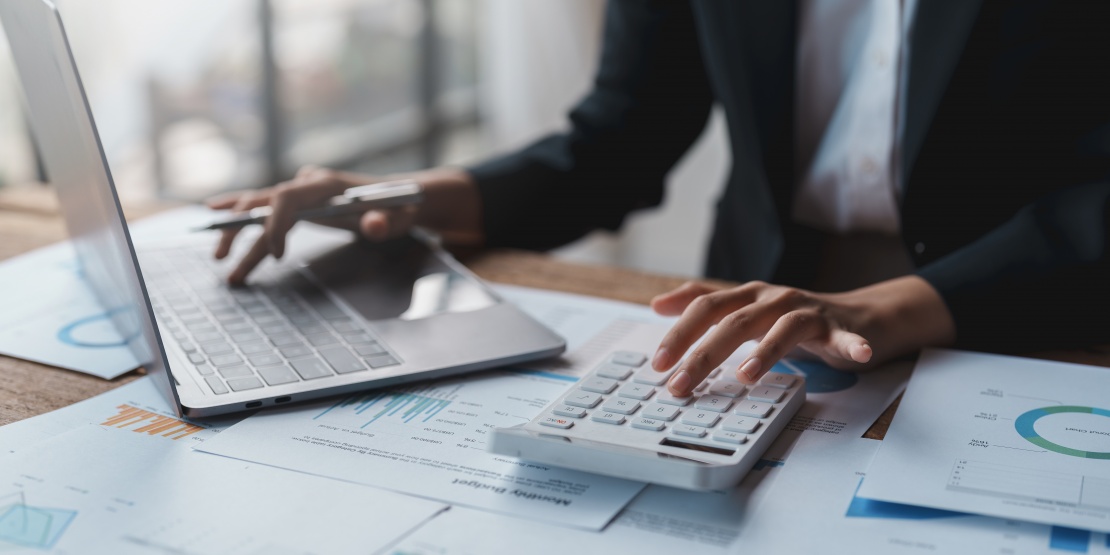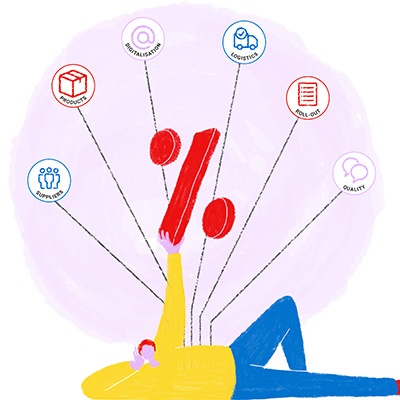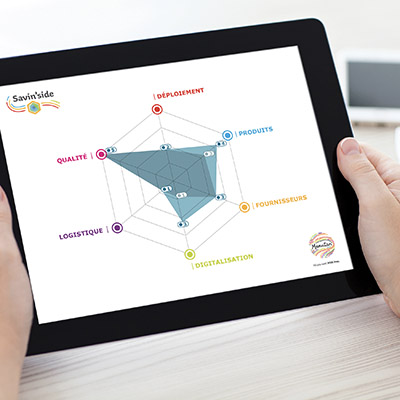As regulations tighten to improve the efficiency, transparency and security of commercial transactions, e-invoicing is rapidly being deployed around the world. Once the invoices are received, they are processed more quickly, costs are reduced, and it ensures better compliance with regulatory standards. This streamlines the invoicing process, while providing real-time electronic data essential for decision-making.
What is e-invoicing?
E-invoicing, or electronic invoicing, refers to the exchange of an invoice document between suppliers and buyers in a structured digital format that allows invoices to be seamlessly integrated with accounting software, enterprise management systems (ERP) and any other financial management solution. Businesses are thus automating the exchange and processing of invoices, replacing traditional paper invoices.
E-invoicing is a key element of accounts payable automation, particularly in terms of invoice validation and reconciliation. This helps streamline the procurement process, reduce processing times and errors, as well as improve visibility and spend management.
To date, more than a hundred countries have started to implement e-invoicing legislation. In most cases, this applies to Business-to-Government (B2G) transactions. Within the European Union, some countries have made e-invoicing mandatory such as Italy and soon France, Belgium and Poland according to their own timetable. In other states such as Spain or the Scandinavian countries, it is based on a voluntary basis.
The benefits of e-invoicing
As Bertrand Gabriel, CEO and founder of Acxias, points out: "Despite the constraint that many companies perceive, particularly due to the necessary adaptation of their information systems and financial processes, the transition to electronic invoicing is a tremendous opportunity with many expected benefits." This approach presents many advantages for both governments and organisations, as well as their stakeholders.
Increased compliance and efficiency
E-invoicing promotes better tax compliance. This plays a key role in the reliability and accessibility of structured data, monitoring and audits, and more broadly transparency. Authorities can thus strengthen the prevention and fight against VAT (value-added tax) fraud. This allows steering actions closer to the economic reality of organisations, thanks to a better knowledge of their activities.
This approach is also synonymous with efficiency. These are as many productivity gains as there are environmental and costs impacts reduced.
Improved business competitiveness
E-invoicing boosts operational efficiency and cost savings in companies. This lightens administrative tasks, reduces the risk of errors and accelerate the invoicing cycle. As a result, companies optimise and improve cash flow management. Relieved of time-consuming manual processing prone to errors, accounting and finance teams are also more fulfilled at work, which improves productivity.
Stronger customer-supplier relationships
Lastly, this approach undoubtedly strengthens customer-supplier relationships. This results in faster and more accurate invoicing, but also fewer errors and reconciliation discrepancies. The automation of accounts payable also allows to always have up-to-date supplier data (contact details, bank account, etc.). This significantly reduces late payments of goods or services and associated penalties, which can severely strain business relationships.
How to adopt e-invoicing?
Today, many companies are getting ready for electronic invoicing. To prepare for this, they need to think about how their information systems will evolve, how they will choose their invoicing software partner, how they will organise their processes and how they will govern their invoicing data.
This is a real project management which must start with a diagnosis of the initial situation focused on the players, processes and systems involved. This first step allows optimising the existing situation and determine the specifications of such a project, as well as the future e-invoicing solution (when the latter is not yet implemented).
To this end, most organisations rely on external support, such as an e-invoice provider, a consulting firm, an accounting management centre and even directly the tax authorities.
Throughout this process, it is necessary to obtain stakeholder buy-in, through the involvement of the main stakeholders, regular communication and close support.
The challenges of e-invoicing
When implementing electronic invoicing, companies will face various challenges.
Preparing the ground
An e-invoicing project starts with both complex and time-consuming tasks:
- Audit of the existing situation;
- Mapping of the invoicing process;
- Sorting and centralisation of all unstructured invoice data...
It is a long-term task that is nevertheless essential to move forward.
Ensuring compliance
Then, companies must strive to ensure compliance. They must in particular check the following elements:
- Mandatory information to be included on invoices;
- Electronic signature methods;
- Document retention period;
- Data to be transmitted via e-reporting...
This generally involves changes within the company and close collaboration with the tax authorities.
Choosing the right partner
The success of the invoice dematerialisation project also depends on the choice of the platform. It is important to select the one that best meets the operational needs of your company.
It must in particular offer the reception and emission channels corresponding to your invoice typology, but also know how to adapt the management processes according to different parameters.
Envisaging the future
Organisations must have adjustable systems. Over the years, the company will grow, with larger invoice flows, or the commercial environment will evolve. It is important that the systems can adapt to these changes. Otherwise, it could require significant investments.
E-invoicing will gradually become mandatory for all companies. This is all the more true in countries where the obligation to send and receive electronic invoices will soon apply. Companies therefore have every interest in embracing this new era for invoicing. In addition to the regulatory requirements, it is a tremendous lever for efficiency, savings and the environmental transition. In other words, it is a strategic asset to improve the overall performance of your company and strengthen your relationships with your trading partners.









